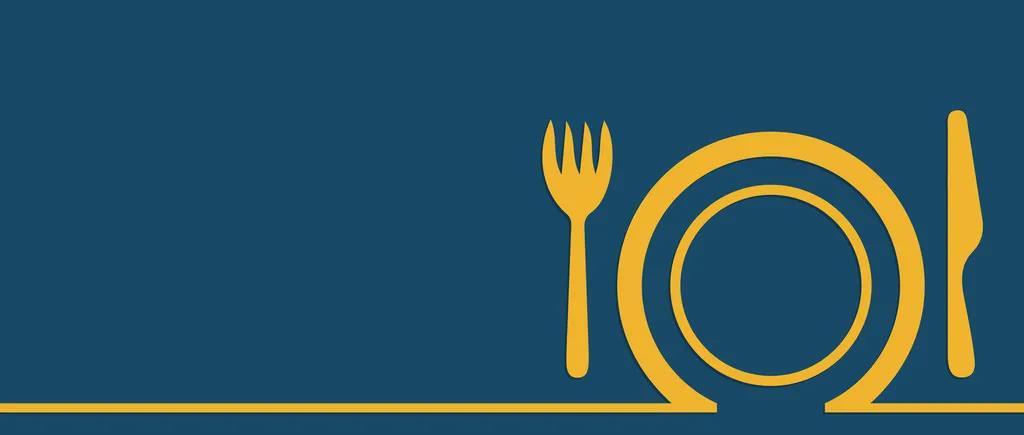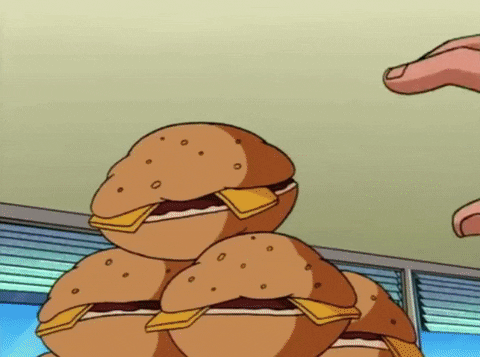
How “abstemious” is modern people’s life? The original three meals a day is being replaced by the model of breakfast + lunch or lunch + dinner.
For some people, eating two meals a day is to control their appetite and avoid getting fat. However, it is easier to gain weight.

Eating two meals a day makes you more likely to get fat
From the perspective of nutrition, the nature of two meals a day is somewhat similar to the limited time eating method, that is, intermittent fasting.
The core of this eating method is to limit the eating time to 6 ~ 10 hours a day (such as between 10 a.m. and 6 p.m.), and do not eat at other times. During the period when you can eat, you can choose to eat only 2 meals or arrange more meals freely.
It is undeniable that the limited time eating method can indeed reduce weight, but the weight lost is not all fat, which will also bring some negative effects:
Muscle consumption
Research shows that limited time eating can lose a lot of muscles. Within 12 weeks, the time limited eating method made people lose an average of 0.64 kg of muscle, while the calorie restriction method of three meals a day made people lose an average of 0.17 kg of muscle.

Rapid rebound
Two meals a day for a long time seems cost-effective for weight loss in terms of food consumption. But the result is likely to be: the initial weight loss effect is obvious, and it will soon enter the platform period.
Because the whole process does not let the human body lose too much fat, but leads to a reduction in metabolic rate. If you eat a little more, or just restore three meals a day, you will gain weight and gain weight.
Three key points should be followed in the collocation of three meals
Many people’s understanding of nutrition intake at three meals a day remains “eat well early, eat full at noon and eat less at night”. They are still confused about how to eat.
To balance nutrition and control weight, here are some practical suggestions for three meals.
Breakfast: no less fruits and vegetables
When time is sufficient, make porridge with millet, brown rice, sweet potato, yam and other cereals and potatoes; In a hurry, make instant pure oatmeal directly, or buy some steamed buns and steamed bread as staple food.
It is recommended to eat an egg, a bag of milk to supplement protein, or drink some soybean milk for breakfast. Fruits and vegetables should not be less.
Leafy vegetables can be fried quickly, or boiled cold, or 200 ~ 350 grams of fruit can be eaten.
Lunch and dinner: staple food is not absent
The staple food for lunch and dinner should be miscellaneous. Don’t always cook white rice, steamed bread or noodles at home. Make more miscellaneous grain rice.
Eat more coarse grain steamed bread, coarse grain rice or steamed sweet potato, pumpkin, corn, etc. If you don’t like the rough taste of coarse grains, you can add some sweet potatoes, pumpkin or a little dried fruit.

It should be reminded that people who control their weight can’t help eating staple food. It is recommended to eat at least one steamed bread or a bowl of rice for a meal.
Eat eggs and milk for breakfast, livestock and poultry meat or aquatic products at noon and evening. It is recommended that the daily intake of livestock and poultry meat, fish and shrimp meat is 40 ~ 75 grams.
It is recommended to eat 300 ~ 500 grams of vegetables every day, of which dark vegetables account for half. Don’t eat breakfast. You can eat 150 ~ 250g at noon and at night.
Extra meal: yogurt with nuts
Some people consume a lot of physical and mental energy and are used to adding meals between meals. It is recommended that each person eat 300 grams of dairy products every day, drink a bag of milk for breakfast, and drink a box of sugar free yogurt and 10 grams of nuts (about 1 with shell) in the afternoon.
In addition to the above food combinations, we should also remember some eating habits:
Remember “three less and one more” every day
Remember the principle of “less oil, less salt, less sugar and more water” in daily diet.
If the oil at the bottom of the plate can be connected into one piece after eating, it means that there is too much oil, which needs to be gradually adjusted to 25 ~ 30g / day. In addition, eat less fried food.
Sugar intake should be controlled below 25 grams per day. Salt should be adjusted in the direction of 6 g / day. Putting salt after starting the pot and eating more steamed vegetables will help reduce salt.
If the food is not carefully cooked and oily and salty, you can rinse it with clean water to remedy it.
Focus on “enjoying” food
Playing with mobile phones and watching TV lead to people’s inattention when eating and unconsciously eat a lot.
When eating, focus and chew slowly. It takes some time for the fullness signal to pass from the stomach to the brain. If you wolf down, you will feel that you have eaten too much when you are full.
Eating vegetables first and then high-quality protein rich foods and staple foods are also conducive to weight control.
Best diet rhythm: three meals and two points
According to the data, about 30% of the world’s office workers need to work outside working hours (9 a.m. – 5 p.m.), and do not eat breakfast, postpone dinner and eat more snacks between meals, which bring hidden dangers to their health.
To lose weight, the most important thing is to control the total energy intake, pay attention to the choice of food, ensure the quality of diet, and ensure the reasonable collocation of all kinds of food.
In the above principle, the most conventional diet rhythm arrangement is “three meals and two points”, that is, three meals plus two extra meals. Compared with other weight loss methods, this method has the following advantages:
Conducive to weight loss and muscle preservation;
Operation is the easiest to adhere to.
When to eat has an important impact on metabolism. Here is an optimal eating schedule for your reference:
Breakfast: around 7:00
At this time, the gastrointestinal tract has fully awakened and the digestive system begins to operate. Eating breakfast at this time can digest and absorb food nutrients most efficiently.
Extra meal: around 10:30
The metabolism of the human body becomes faster, and most people often feel a little hungry. At this time, they need to eat an extra meal to supplement energy, especially students, office workers and other brain users, which helps to concentrate and maintain an efficient learning and working state.
You can eat a cucumber or tomato, drink half a cup of milk, a small bottle of yogurt, two or three pieces of dried tofu or a handful of nuts. But after adding meals, lunch should be reduced according to your appetite.

Lunch: around 12:30
After 12:00 noon is the time when the body’s energy demand is the greatest. For many people, although the lunch time is relatively short, they should still chew and eat slowly. By all means, they should not eat while working.
Afternoon tea: around 3:30 p.m
The interval between lunch and dinner is long. By 16 p.m., the glucose content in the body has decreased. Having some afternoon tea in advance can avoid slowing down your thinking and prevent bad emotions such as irritability and anxiety.
Afternoon tea should be matched like dinner. It’s best to choose 2 ~ 3 kinds of complementary foods that can ensure balanced nutrition. For example, a cereal food (biscuits, dried bread), with a dairy product, or a seasonal fruit, and the beverage should be boiled water and green tea.
Dinner: between 6 p.m. and 7 p.m
If you eat too late and go to bed after digesting food, you will not only have poor sleep quality, but also increase the burden of gastrointestinal tract, but also easily induce obesity and lead to a variety of chronic diseases.
For people with diabetes and those who need high intensity mental work at night, they can eat the midnight snack 2 hours before bedtime. Take low-fat and digestible foods (such as bread slices and light porridge), and don’t eat more than half of the dinner.
Comments